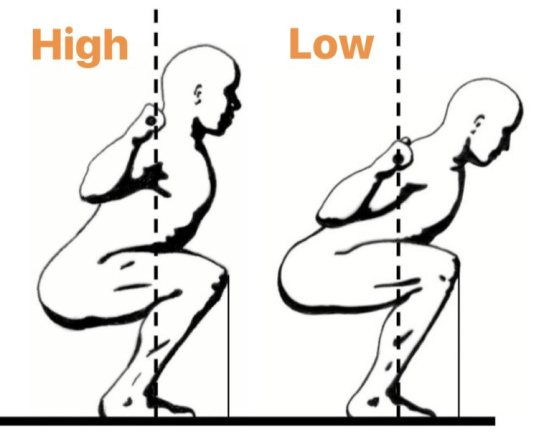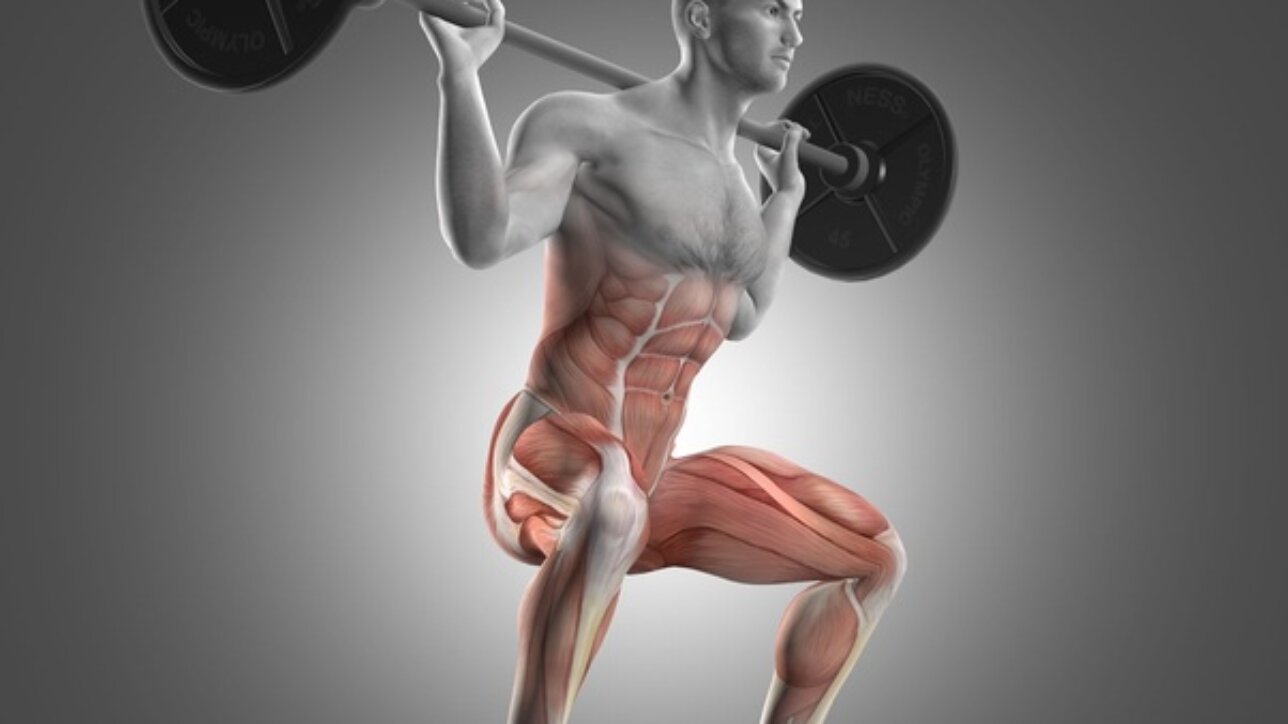Why perform a barbell squat?
The barbell squat is an exercise that many people can benefit from. It challenges the strength and stability of your shoulders, core, hips, knees, and ankles. Almost the entire body is involved in this exercise and it can play a huge role in calories burned, strengthening, muscle building, and in coordination.
Almost anyone regardless of goals or sport can benefit from doing barbell squats. And it can be incorporated into almost any workout routine. Given the benefits and versatility of this exercise why would you not want to include this in your workouts! There are many different ways to perform this exercise. Here we will go over some of the basics to help you get started.
Getting started can be intimidating, but as stated above the benefits are many. So, how do you perform a barbell squat?!
Well, various exercise variations exist, and your goals and individual physical characteristics play a significant role. The process can become complex, and you may encounter professionals with strong opinions or rigid approaches. If you’re new to lifting or simply aiming to begin barbell squatting, the ideal approach is to find the variation that suits you best. There are a few things that go into choosing your stance, where to place the bar, how low to go, or where to place your feet. The truth is that it depends on your anatomy! As you know many people come in different sizes/shapes and the same goes for our bones and joints. So, we will start from the bottom and work our way up.
Foot placement
First step in our bottoms up approach is finding our foot placement. Our hips will play a huge roll in where our feet will go. Different people have varying hip socket and femur angles. Someone that is more anteverted may feel comfortable with a shoulder width stance or even a slightly narrower stance with toes pointed forward.
On the other hand, someone that is more retroverted will feel more comfortable with their feet a little wider and their toes angled outwards slightly (away from the body < 30 degrees). Truthfully without a trained professional like a physical therapist or athletic trainer it is hard to figure out your own hip anatomy. So, to get started you should try to perform squats without any weight and play around with your feet positioning. Usually, you will want to choose where you feel most comfortable and the strongest.
Hips and knees
Next step up would be our knees and hips. Just like with feet placement a lot will have to do with your hip anatomy. Once you find your feet placement the knees and hips are easier since they should track in the direction of your feet/toes. Remember everyone is different but there are some things that you do need to keep in mind. Often people like to let their knees cave inwards but keeping your knees straight in line with the direction of your toes should prevent it. It will ensure that your patellar tendon is in a more optimal position and will prevent unnecessary stress on your ligaments.
When squatting down you generally should bend at the knees and hips at the same time and go down to wherever you feel comfortable. The knee and hip angle/ demands will also depend on the type of squat you are doing and how low you are going. You do not need to go as low as possible unless you are working out for a specific sport or goal in mind. Knees are safe to go slightly past the toes especially when going down deep. But for most people going down as low as possible is not always necessary. Most people should eventually work towards squatting down to where their hip crease is at or below knee level, but everyone is different. Without getting into too much detail you will want to play around with what is most comfortable.

Shoulders and where to place the bar
Next step in doing a barbell squat, is shoulder and bar placement. The two main barbell squats are the high bar and the low bar. Before picking up the bar and placing it on your back, ensure that you retract or squeeze your shoulders back tightly. Doing so will help create a shelf for the bar and will help prevent your spine from bending forward with heavier weight. When selecting the bar placement for the low bar squat, position the bar on your rear delts and below your upper traps. For the high bar squat, let it rest on your upper traps.
Again, things to keep in mind is your personal anatomy and flexibility. The high bar may allow you to stay more upright and go down deeper, but the demands on your thoracic spine, knee, and ankle mobility are greater. The low bar for many may allow you to use more glutes and thus push slightly more weight, but it will require more hip flexion and shoulder mobility. Choosing which bar placement should depend on your mobility/flexibility and your personal goals or sport. Best thing to do again is play around with the two variations and see what feels best for you.

Where to hold the bar with your hands?
Finally, on our way up is your hand placement. There is some debate on whether you should place your hands far away on the bar or tucked as close to your shoulder as possible. This one truthfully will depend on your preference, but it is important to maintain your shoulders retracted and tight. For many keeping your hands close to your shoulders will help keep your upper back and shoulder retracted more easily. Some people prefer a wide hand placement on the bar. Which is acceptable if you maintain a nice and tight upper back. Ensure you keep your wrists in a neutral position, avoiding excessive extension or bending backward. Extending your wrists backward may cause unnecessary stress and potential pain or discomfort.

Important cues and things to keep in mind
After finding which barbell squat variation and positionings work best for you there are some key things to make sure you are performing them safely. You want to make sure you are keeping a tight upper back and brace your core throughout the descent and on the way up. Keeping your core and shoulder braced and tight will help maintain a neutral spine during your squat. You want to try and keep a neutral spine as much as possible during this exercise to prevent injury.
A high bar squat will allow you to stay more upright. And a low bar squat will require more of a forward lean. But even though they look different a neutral spine is important in both.
Also, ensure that you evenly distribute the weight on your feet to help maintain flat footing on the floor. Even weight distribution on the feet will also help keep a straight bar path… And prevent you from falling forwards or backwards!
Lastly, bending with the knees and hips at the same time will also help you from putting unnecessary stress on the knees or lower back. You do not want to sit too far back or bend too much at the knees since excessive motion either way is not optimal. Keeping a straight bar path and feet balanced will help prevent excessive bending at the knees and excessive forward lean.

Final thoughts
In conclusion, the barbell squat is a very versatile exercise that many can benefit from. But finding the right form and variation depends on you! Many people like to perform a squat with the same stance or form as a trainer/friend recommends and that may not always work for you. Everyone has different a build, anatomy, and flexibility/mobility. Play around with your feet placement and work your way up until you feel most comfortable and strongest. At the end of the day your squat may look very different when comparing yourself to someone else. But performing the squat safely and comfortably is what matters. Just make sure you keep your spine in a neutral position and that you are comfortable with your feet, knees/hips, shoulders, and hands.


